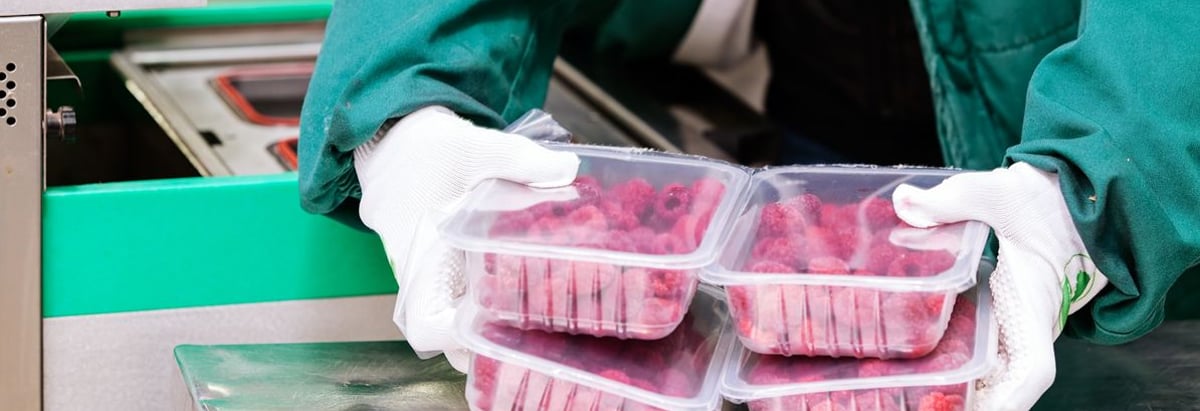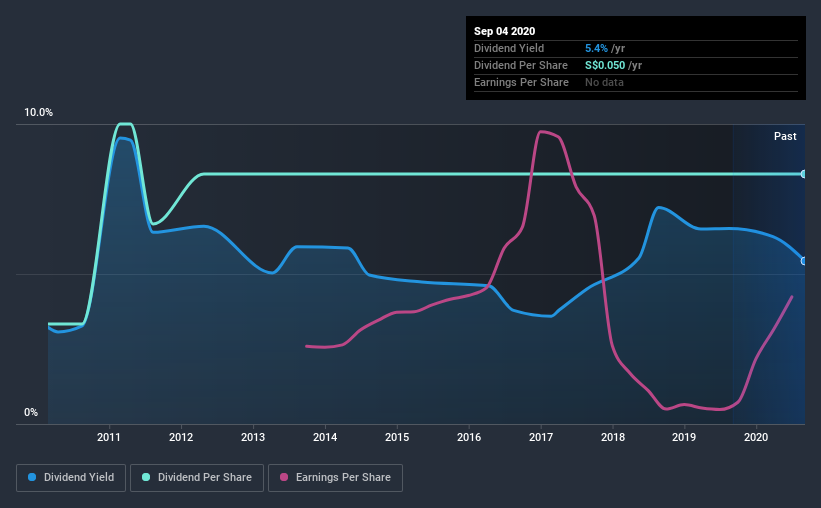
QAF Limited (SGX:Q01) stock is about to trade ex-dividend in four days. This means that investors who purchase shares on or after the 9th of September will not receive the dividend, which will be paid on the 25th of September.
QAF's next dividend payment will be S$0.01 per share, on the back of last year when the company paid a total of S$0.05 to shareholders. Looking at the last 12 months of distributions, QAF has a trailing yield of approximately 5.4% on its current stock price of SGD0.92. Dividends are a major contributor to investment returns for long term holders, but only if the dividend continues to be paid. As a result, readers should always check whether QAF has been able to grow its dividends, or if the dividend might be cut.
Check out our latest analysis for QAF
Dividends are usually paid out of company profits, so if a company pays out more than it earned then its dividend is usually at greater risk of being cut. QAF paid out more than half (54%) of its earnings last year, which is a regular payout ratio for most companies. Yet cash flow is typically more important than profit for assessing dividend sustainability, so we should always check if the company generated enough cash to afford its dividend. It paid out more than half (63%) of its free cash flow in the past year, which is within an average range for most companies.
It's positive to see that QAF's dividend is covered by both profits and cash flow, since this is generally a sign that the dividend is sustainable, and a lower payout ratio usually suggests a greater margin of safety before the dividend gets cut.
Click here to see how much of its profit QAF paid out over the last 12 months.

Have Earnings And Dividends Been Growing?
Companies with consistently growing earnings per share generally make the best dividend stocks, as they usually find it easier to grow dividends per share. If business enters a downturn and the dividend is cut, the company could see its value fall precipitously. With that in mind, we're encouraged by the steady growth at QAF, with earnings per share up 2.6% on average over the last five years. Earnings per share growth has been slim, and the company is already paying out a majority of its earnings. While there is some room to both increase the payout ratio and reinvest in the business, generally the higher a payout ratio goes, the lower a company's prospects for future growth.
Many investors will assess a company's dividend performance by evaluating how much the dividend payments have changed over time. In the last 10 years, QAF has lifted its dividend by approximately 9.6% a year on average. It's encouraging to see the company lifting dividends while earnings are growing, suggesting at least some corporate interest in rewarding shareholders.
To Sum It Up
From a dividend perspective, should investors buy or avoid QAF? Earnings per share have been growing modestly and QAF paid out a bit over half of its earnings and free cash flow last year. Overall, it's hard to get excited about QAF from a dividend perspective.
However if you're still interested in QAF as a potential investment, you should definitely consider some of the risks involved with QAF. Be aware that QAF is showing 2 warning signs in our investment analysis, and 1 of those is significant...
We wouldn't recommend just buying the first dividend stock you see, though. Here's a list of interesting dividend stocks with a greater than 2% yield and an upcoming dividend.
If you’re looking to trade QAF, open an account with the lowest-cost* platform trusted by professionals, Interactive Brokers. Their clients from over 200 countries and territories trade stocks, options, futures, forex, bonds and funds worldwide from a single integrated account. Promoted
Valuation is complex, but we're here to simplify it.
Discover if QAF might be undervalued or overvalued with our detailed analysis, featuring fair value estimates, potential risks, dividends, insider trades, and its financial condition.
Access Free AnalysisThis article by Simply Wall St is general in nature. It does not constitute a recommendation to buy or sell any stock, and does not take account of your objectives, or your financial situation. We aim to bring you long-term focused analysis driven by fundamental data. Note that our analysis may not factor in the latest price-sensitive company announcements or qualitative material. Simply Wall St has no position in any stocks mentioned.
*Interactive Brokers Rated Lowest Cost Broker by StockBrokers.com Annual Online Review 2020
Have feedback on this article? Concerned about the content? Get in touch with us directly. Alternatively, email editorial-team@simplywallst.com.
About SGX:Q01
QAF
An investment holding company, engages in the manufacture and distribution of bread, bakery, and confectionery products in Singapore, Australia, the Philippines, Malaysia, and internationally.
Flawless balance sheet established dividend payer.
Market Insights
Community Narratives





